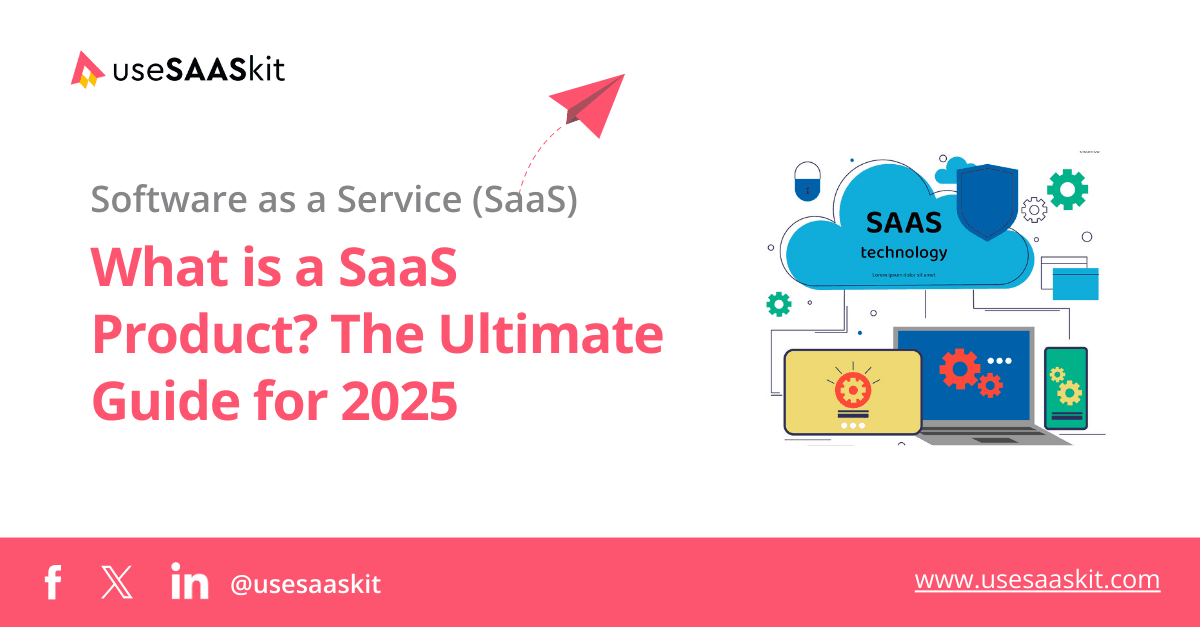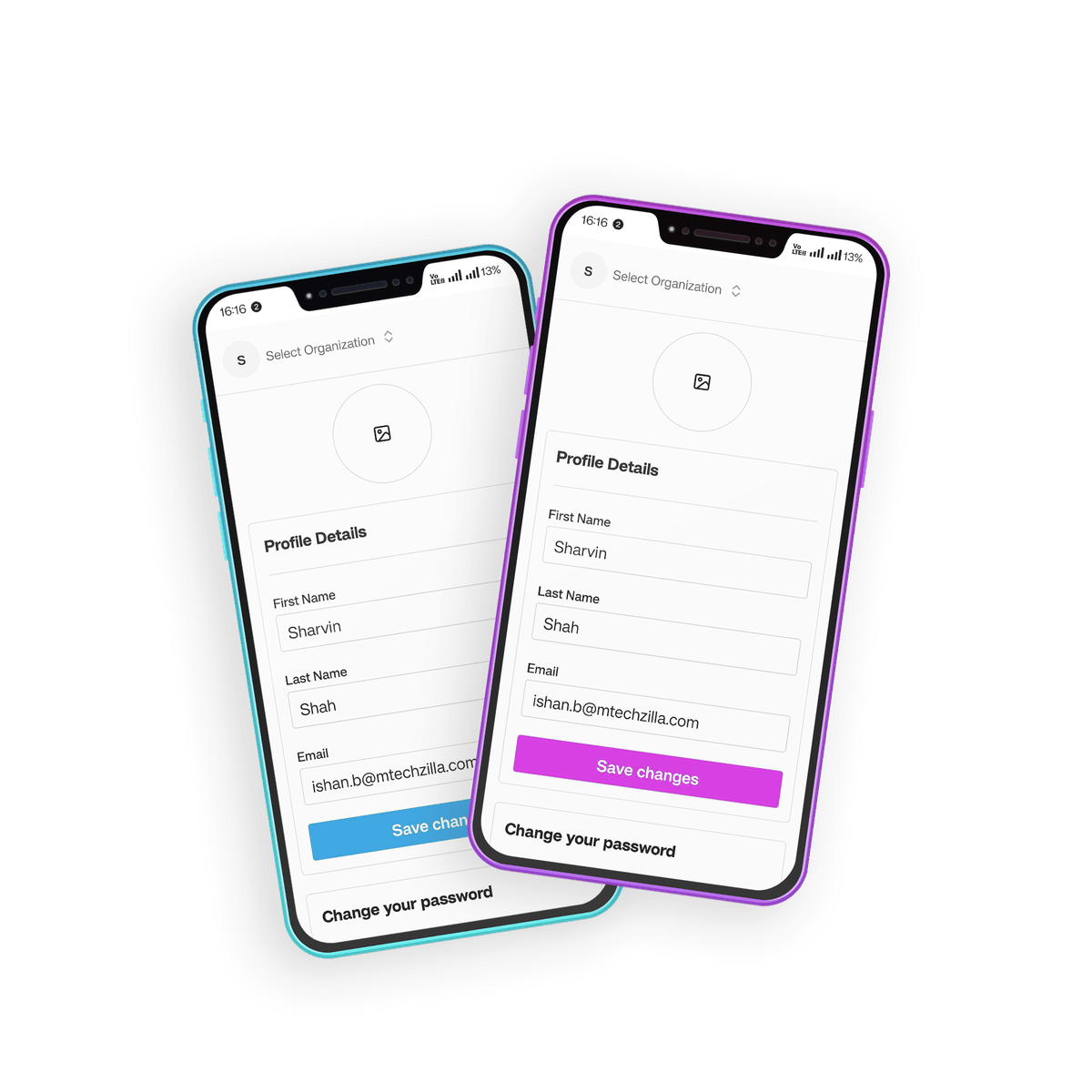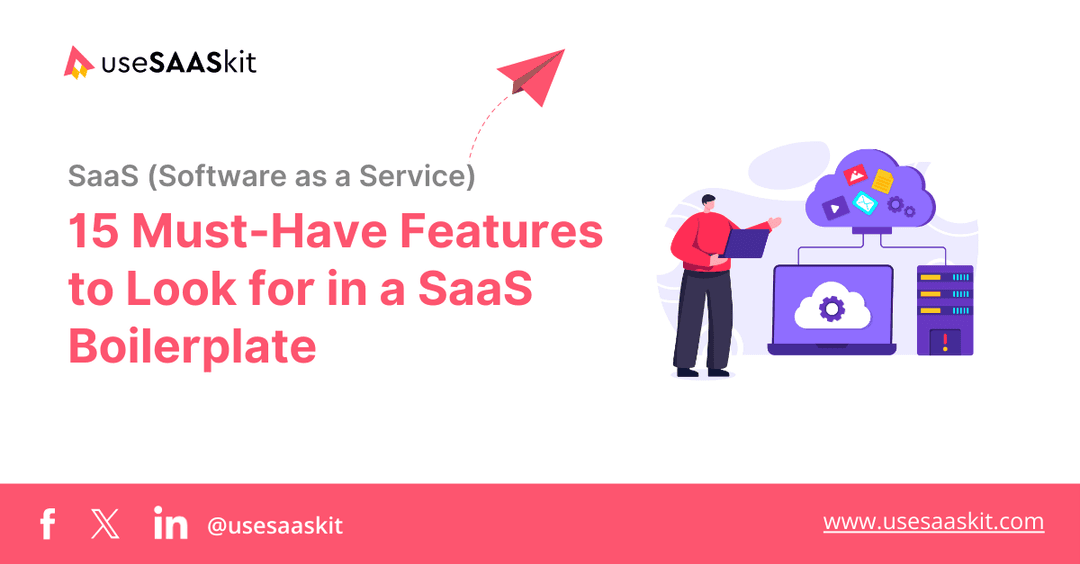Tuesday, 24 Dec 2024
10 min read
What is a SaaS Product? The Ultimate Guide for 2025

SaaS products are everywhere in today’s market. Did you know that over 175 private SaaS companies are now worth more than $1 billion each? This shows that SaaS isn’t just a trend—it’s a fast-growing industry changing the way businesses work.
The future of SaaS is bright. More businesses are moving online, and the need for SaaS products will keep growing. Right now, the SaaS market is worth around $500 billion. Experts predict it will grow to $1 trillion in just a few years. That’s how big the opportunity is for people looking to create their own SaaS products.
If you’re thinking about building a SaaS business, now is the perfect time. But first, let’s explore what SaaS really means and why starting with a minimum viable product (MVP) can be a smart way to enter this booming market.
Table of Contents
- What is a SaaS Product?
- Key Features of SaaS Products
- Different Types of SaaS Products
- Building SaaS Products: The Key Steps
- Popular Examples of SaaS Companies
- Challenges in SaaS Product Development
- How to Launch a SaaS Product Successfully
- Wrapping Up
What is a SaaS Product?
A SaaS product, or Software-as-a-Service, is software that you can use online without needing to download or install it on your device. It is hosted on the cloud and provided to users through a subscription plan.
SaaS is sometimes called “on-demand software” because you can access it anytime, usually through a web browser or a mobile/desktop app.
Key Features of SaaS Products
Here are the key features of SaaS products explained simply:
- Easy to Access: You can use SaaS software from any device with an internet connection. This means you can work or use the software from almost anywhere.
- Subscription-Based: Instead of paying a large one-time fee, you pay a monthly or yearly subscription to use the software.
- No Maintenance Required: The software is hosted on the provider’s servers, so you don’t need to worry about installing, upgrading, or maintaining it.
- Automatic Updates: The provider takes care of updates, so you always have the latest version without needing to download anything.
- Scalable: SaaS solutions can grow with your needs. You can choose a plan that fits your business size and upgrade as you grow.
- Cloud-Based: Being on the cloud makes it easier to share and collaborate with others in real time.
- Affordable: You don’t need to spend money on expensive hardware or software licenses. The subscription fee covers everything, including maintenance and updates.
Different Types of SaaS Products
Software as a Service (SaaS) includes many different types of online software, each built to make specific business tasks easier and more efficient. Here’s a simple breakdown of the main types of SaaS products and how they can benefit your business:
- Product Growth Tools: These tools help you improve your product by increasing user engagement, gathering feedback, and providing helpful data. They give you insights into how users interact with your product so you can make better decisions and keep improving.
- Customer Relationship Management (CRM) Software: CRM tools help businesses keep track of customer interactions and organize customer data. They’re great for improving customer service, building stronger relationships, and boosting sales.
- Project Management Software: This software helps you plan, organize, and manage projects. It’s useful for keeping tasks on track, assigning work to team members, and managing resources efficiently.
- Enterprise Resource Planning (ERP) Systems: ERP software combines different business processes—like finance, inventory, and HR—into one system. This makes it easier to share information and manage operations, especially for larger businesses.
- Collaboration and Communication Tools: These tools make it easy for teams to work together, no matter where they are. They support smooth communication and allow teams to share ideas and updates quickly.
- Financial Management Software: This software helps businesses manage their finances, track expenses, and stay compliant with financial regulations. It’s essential for budgeting and creating accurate financial reports.
- Customer Service Software: Tools like live chat and ticketing systems help businesses manage customer support. Some also include self-service features so customers can find solutions on their own, saving time for both the business and the customer.
- Marketing Automation Tools: These tools simplify repetitive marketing tasks, such as sending emails, posting on social media, or tracking website actions. They help businesses scale their marketing efforts and measure how well campaigns are performing.
Each type of SaaS product is designed to solve specific business challenges, making daily operations smoother and more efficient. By using these tools, businesses can save time, cut costs, and focus on growing their success.
Building SaaS Products: The Key Steps
Building a SaaS product involves a few important steps, including using cloud computing, agile processes, and making sure the product can grow easily. Let’s break it down in simple terms.
Cloud Computing
Cloud computing is the foundation of SaaS development. Instead of using physical servers, software is built and accessed over the internet. This makes it quicker to develop and easier for users to access from anywhere.
To build SaaS products, developers use different cloud-based tools:
- Infrastructure as a Service (IaaS): This provides virtual machines, storage, and networks that help build and run software.
- Platform as a Service (PaaS): This helps developers create, test, and run their applications on the cloud.
- Software as a Service (SaaS): This is the final product, where software is made available to users via the internet.
With cloud computing, the software is stored on servers in data centers around the world. Users can access it online, without needing any special hardware.
Agile Processes
Agile development is a method where software is built in smaller steps called “sprints.” Teams work quickly, release small improvements often, and get feedback from users to make the product better. This helps create a product that keeps getting better over time based on user needs.
With agile processes, new features and updates are added quickly, helping the product keep up with the market.
Scalability
Scalability is about making sure the software can handle more users or data without slowing down or crashing. As more people use the SaaS product, the system must be able to grow to meet the increased demand, keeping everything running smoothly.
Popular Examples of SaaS Companies
Here are four examples of well-known SaaS companies and how they show the value of SaaS products:
Salesforce
Salesforce is one of the first and most famous SaaS companies. It provides tools for managing customer relationships, helping businesses track their sales, marketing, and customer service in one place.
Since it’s cloud-based, businesses don’t need special equipment to use it, making it accessible to everyone.
Slack
Slack is a communication tool that helps teams work together more easily. It allows users to send messages, share files, and organize conversations into channels. Because it’s a cloud-based SaaS product, teams can use Slack from anywhere with an internet connection, making it great for remote work.
Zoom
Zoom is a video conferencing platform that makes virtual meetings simple. It’s widely used for business meetings, online classes, and webinars. Since Zoom works in the cloud, it’s easy to use without needing any complicated equipment or technical knowledge.
Shopify
Shopify is a platform that helps people set up and manage online stores. It provides tools to create websites, process payments, and keep track of products. Shopify is perfect for anyone who wants to start an online business because it’s easy to use and doesn’t require coding skills.
These examples show how SaaS products make everyday tasks simpler and more affordable for businesses. They’re designed to save time and effort while helping companies grow and succeed.
If you're starting to build your SaaS, we offer a number of free tools for you, including the SaaS Idea Validator, Pricing Generator, Content Generator, Blog Topic Generator, and more.
Challenges in SaaS Product Development
There are several challenges companies face when developing SaaS products:
- Product Innovation: The SaaS market is very competitive. Big companies with lots of resources and small startups can easily create similar products that can outshine yours.
- Understanding Customer Needs: It can be expensive and time-consuming to gather feedback from users. But it’s important to build a product that fits your target customers’ needs in a fast-changing market.
- Scalability: Making sure the product can grow as more people use it is tricky. This becomes even more difficult when the software needs to be customized for different customers.
- Integration Issues: Businesses use many software tools. To succeed, your SaaS product needs to work well with other tools your customers use. This involves creating connections (called APIs) between your product and other systems.
- User Adoption: Just because a customer signs up doesn’t mean they will use the software regularly. To keep them using your product, you need to make onboarding easy and provide good training.
- Pricing and Monetization: Finding the right price for your SaaS product can be tough. You need to find a price that works for both the customer and the business, balancing product value and affordability.
- Go-To-Market Strategy: Marketing and selling a SaaS product takes research and testing. You need to find the best way to reach your target audience and convince them to use your product.
- Price Localization: If you’re selling in different countries, it’s important to adjust prices based on the local economy. This helps you stay competitive while making sure you’re not losing money.
How to Launch a SaaS Product Successfully
Launching a SaaS product is a step-by-step process that combines building the software, setting up hosting, and ensuring your service works well for customers. Here's a simplified guide to help you launch your SaaS product the right way.
1. Research Your Market and Test Your Idea
Before you start building your product, it's important to check if people will actually want it. This includes:
- Figuring out if there's enough demand for your product.
- Making sure that your idea solves a problem or meets a need for people.
- Seeing if the market is big enough for your product to grow into a successful business.
To test your idea, you can create a Minimum Viable Product (MVP), which is a simple version of your product, or you can ask people directly by doing surveys or interviews.
2. Define What Your Product Will Do
Once you’ve tested your idea, the next step is to clearly define what your product will do. This means:
- Deciding what features the product will have.
- Explaining how these features will help users.
- Creating a user story, which is a simple description of how people will use your product.
3. Use SaaS Templates to Speed Up Development

To save time during development, use SaaS templates or boilerplate code. These are pre-made templates that come with common features like user login, subscription management, and security measures. Using these templates can make building your product faster and more efficient.
useSAASkit offers a powerful Next.js boilerplate, which includes ready-to-use features like authentication, multi-org support, admin tools, billing, marketing pages, analytics, and AI tools. With this AI Boilerplate, you can launch your startup in just a week, instead of spending months on repetitive setup.
4. Design the User Experience (UX) and Interface (UI)
The UX/UI design focuses on making your product easy to use and visually attractive. You’ll create:
- Mockups: Rough sketches of how the product will look.
- Wireframes: More detailed designs showing how the app or website will be laid out.
- Prototypes: A clickable version of your design that users can interact with.
This design process helps you make sure users can easily navigate the product before it’s fully developed.
5. Choose the Right Technology for Your Product
Choosing the right tools and technologies is crucial for building your SaaS product. This includes:
- Programming languages (like JavaScript, Python, etc.).
- Databases (like MySQL or MongoDB).
- Cloud platforms (such as AWS or Google Cloud).
You’ll also need to decide how your software will be set up:
- Multi-tenant: One version of your software works for all customers.
- Single tenant: Each customer gets their own version of the software.
To speed up development, you can use SaaS templates or boilerplate code, which are pre-made templates that include the basic features many SaaS products need. These save time and effort in building the software.
6. Build the Product
Now, it’s time to actually build the software. This involves:
- Architecture: Planning the structure of your software.
- Frontend development: Creating the part of the software users interact with, like buttons and forms.
- Backend development: Building the part that works behind the scenes, managing data and users.
- Quality assurance (QA): Testing your product to find and fix bugs or problems.
- Release and deployment: Getting your software online for users to access. You’ll host it on a server or cloud platform.
7. Create a Simple Onboarding Process for New Users
When your product is live, make sure new users know how to use it by providing:
- Training: Teaching users how to use the product.
- Billing system: Setting up payments and subscriptions.
- Help center: Creating documentation to assist users.
For complex products, you may also need to do custom integrations or offer extra support.
8. Decide on a Price for Your Product
Pricing is very important. You need to find the right price by considering:
- The value your product provides.
- What your competitors charge.
- Your target audience’s budget.
Most SaaS products use different pricing models, such as:
- Flat-rate: One price for all users.
- Tiered pricing: Different plans with more features for higher prices.
- Usage-based: Pricing based on how much the product is used.
9. Launch and Promote Your Product
Once your product is ready, it’s time to launch and promote it. You can:
- Build excitement before the launch using ads, social media, and PR.
- Promote the product long-term using SEO, email marketing, and content marketing.
It’s also important to keep supporting your customers by providing updates, helping them with any issues, and offering additional features or services.
Wrapping Up
If you’re building your SaaS product, you're working to solve real problems and create something valuable. But it can be tough. The best way to succeed is by making smart choices, saving time, and focusing on what matters.
Using SaaS templates and boilerplate code is a great way to save time. These pre-made tools can help you quickly set up common features like user login, subscriptions, and security. But remember, it's not just about building the product. You must give equal importance to other areas, like marketing and customer support, to ensure your product reaches the right people and meets their needs.
So, start today, use templates to speed things up, and make your SaaS journey smoother and more successful!



